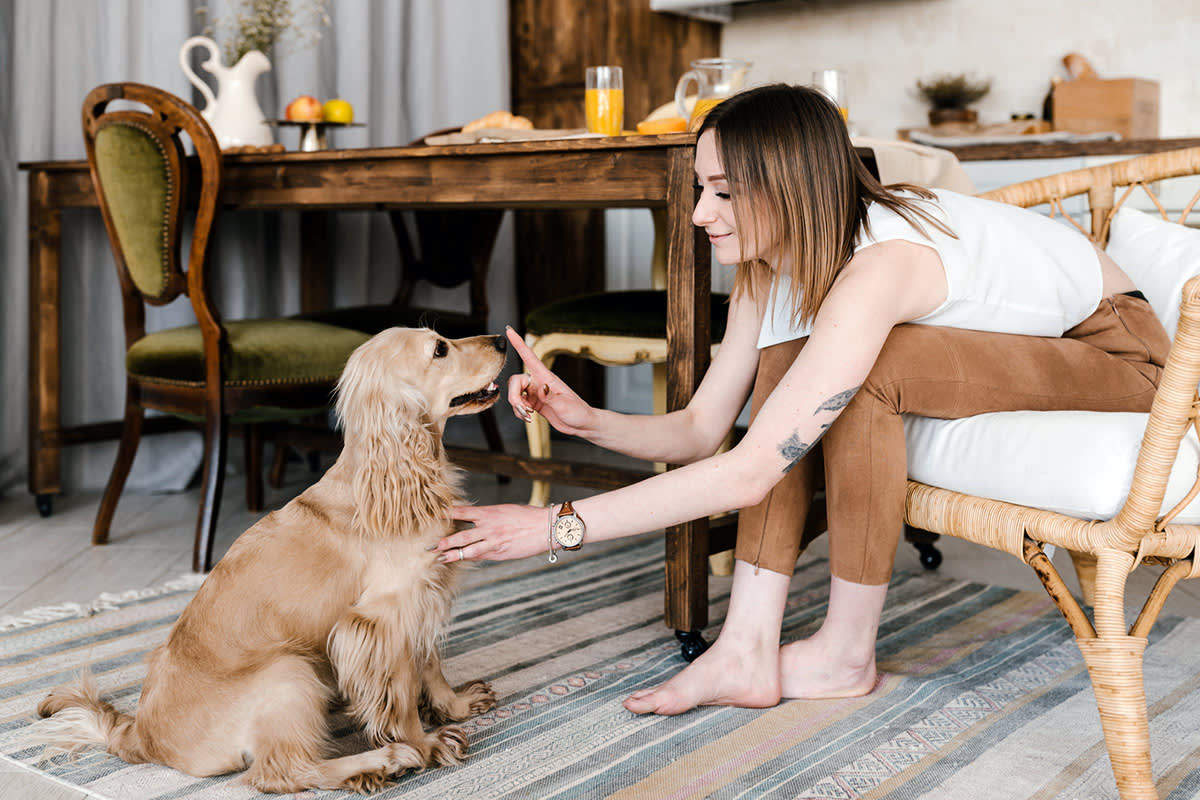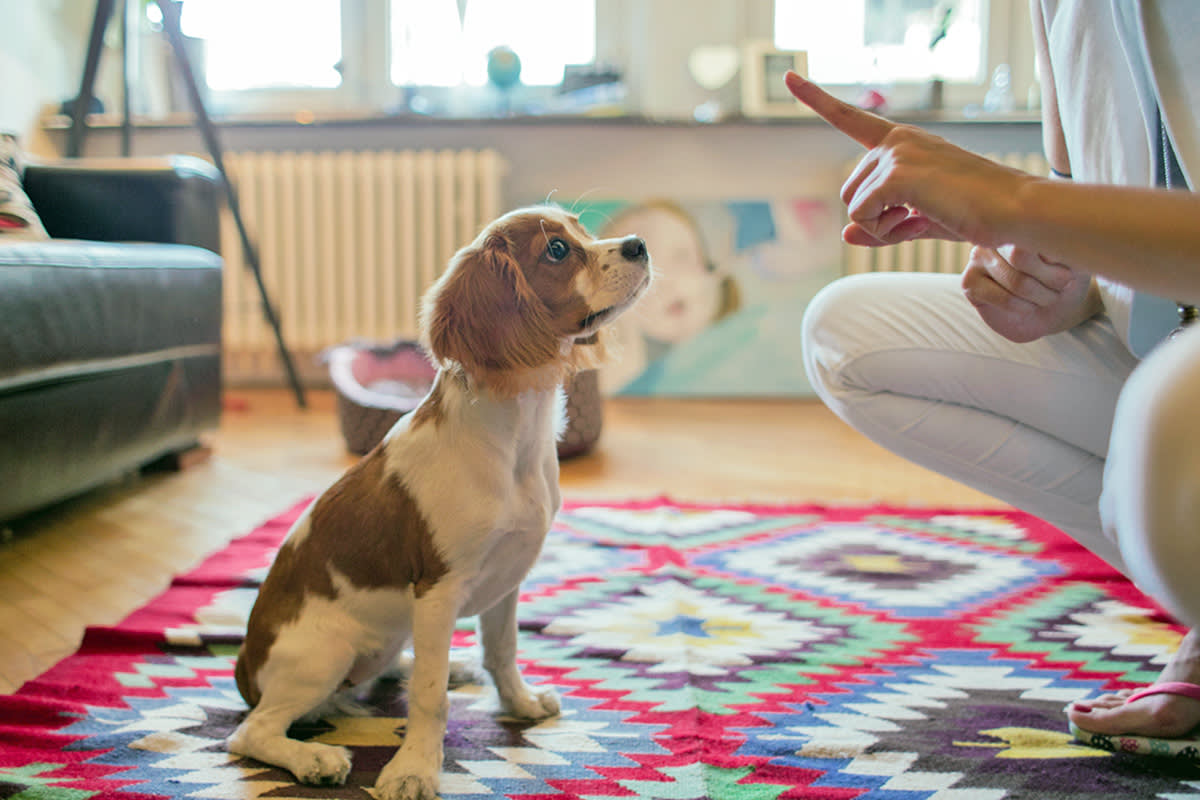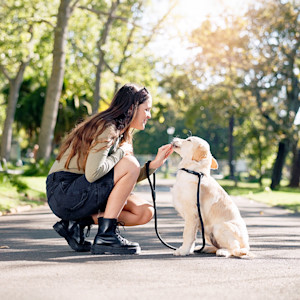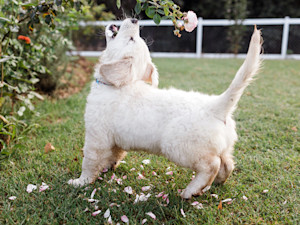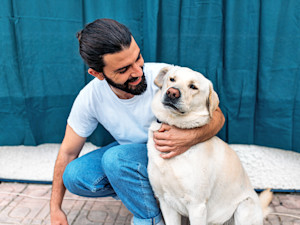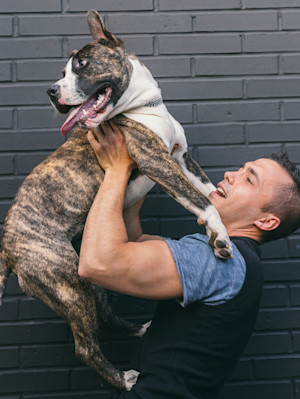7 Ways to Get Your Dog to Stop Doing Something Naughty without Saying “No”
It’s a reflex to yell “no,” but it’s not the best option.
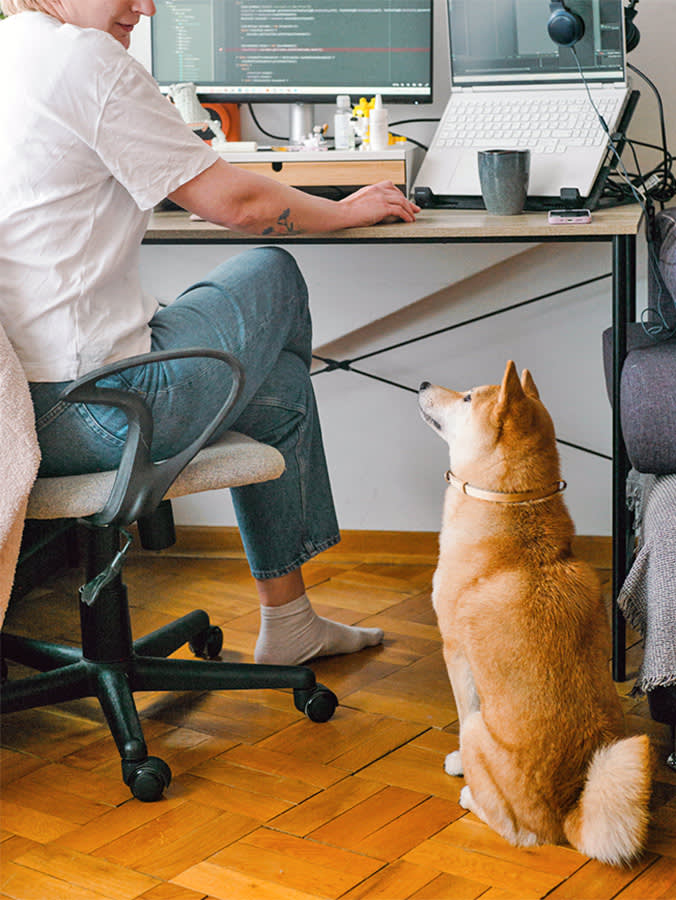
Share Article
We hear it all the time — a person desperately telling their dog, “No,” and then “No,” and then “No!!!!” And finally, “No, no, no, no, no!” all without having much impact on their dog’s behavior. Just telling our dogs “no” isn’t particularly effective, because dogs don’t know what it means unless they are specifically taught to understand the word. And who wants to be the pet parent saying “no” all the time anyway?
What most dogs take away from people telling them “no” is that the people are upset, but that doesn’t mean the dogs have any idea why. Even if a dog figures out that it’s their behavior that is causing distress, they don’t know specifically what they did wrong. It may be absurdly obvious to you that getting into the trash is the problem, but your pup may not see it the same way and can be confused about what they did to upset you. Were they wrong for being in the kitchen? Or being near you? Or eating?
There are better ways to stop your dog from doing something besides just saying, “No!” Consider these.
Turn away.
If your dog is reacting to something on a walk for example, one way to stop the behavior is to change directions and move away from whatever is setting them off. Whether it’s another dog, a person, a lawn mower, a bike, or a scary holiday decoration, your dog is more likely to stop barking, lunging, or growling if you walk away.

Yes, they can turn their head back to look at it, but many dogs don’t, or only do so briefly. If you turn away from your dog’s triggers repeatedly, they may become less reactive to them over time. They have learned you will get them out of any uncomfortable situation, so they will be less upset when it pops up again.
Ask for their attention.
If your dog is doing something you don’t want them to do, try asking for their attention. That may mean saying their name, or it could mean giving them a well-known cue, like, “Watch.” Once your dog’s attention is on you, it’s a whole lot less likely they will keep barking out the window, chasing the cat, digging in the trash can, chewing on the corner of the couch, or anything you want them to stop doing right now.
Getting their attention is key to influencing our dogs’ behavior. So to make sure they stay willing to look when you ask, be sure to reinforce them using treats or something else they really love.
Initiate play.
Nothing changes the emotions of most dogs faster than getting the chance to play. It’s so powerful because it channels the high arousal of poor behavior into acceptable behavior.
It is often easier to redirect the energy of a dog reacting to something than it is to calm them down. Initiating a game of tug or fetch with a dog who is barking out the window is going to be more effective than it is to ask them to “sit” or to “go to their place.” Bonus: This method is extra fun for you and your dog!
Give them a cue to do something that’s easy for them.
A fundamental guiding principle of dog training is to focus on what you want a dog to do rather than telling them not to do something. With that in mind, when your dog is doing something you don’t like, instead of saying “no” think about what specific behaviors you would prefer them to do instead.
You probably have a long list of behaviors you would prefer to the problematic one, so choose the one you think your dog is most likely to do on cue. Common easy cues are “Sit” and “Touch” but if your dog’s favorite cue is “Shake” or “Crawl,” ask for those behaviors instead. It can be hard for them to respond to even an easy cue when they are distracted, so be sure to reward your dog with treats for doing what you have asked.
Change their mood with a phrase that distracts them.
A lot of things we say have an immediate impact on how our dog feels and what they do. Examples of powerful phrases are: “It’s time for dinner?”; “Let’s go for a walk”; “Who wants to go for a ride?”; and “We’re going to go to the park.”
If you can say one of these phrases and follow through by doing the thing they like, they will redirect their behavior. Don’t tease your dog by saying the phrase and then doing nothing (unless it's a serious emergency — then all the rules change!). You want them to trust that when you say you will do something, you will follow through.
Begin a “Find Your Treat” game.
Teach your dog the game “Find Your Treat” so you can play it anytime they are doing something you want them to stop. To teach your dog to play, put a few treats on the floor and tell your dog, “Find your treat.” Do this multiple times over several days until your dog knows the phrase “Find your treat” means to start searching.
Then, put treats down without your dog seeing you do it and say, “Find your treat.” The spots where you put the goodies can be easy at first. Work up to more difficult hiding areas so your dog doesn’t get frustrated and give up right away.
You can even play by telling your dog to “stay” in one room, hiding a bunch of treats in another room, releasing them from the stay, and telling them, “Find your treat.” Once your dog knows this game well, you can play it anytime to stop them from doing something you don’t like. Simply drop a handful of treats, say, “Find your treat,” and your dog will stop lunging at a stroller or pulling a sock out of the laundry to put their nose to the ground and search for treats.
Prevent the behavior in the future.
Sometimes, the way to stop behavior you don’t like is to make sure your dog never starts the behavior in the first place. (I know, this deserves an eye roll, but I swear there’s value in the strategy.) So, if your dog always jumps up on visitors, implement a plan to make that impossible. Then, put the plan into action before people arrive. It’s a great way to stop your dog from leaping on them, and you never have to say, “No!”
Whether you have your dog behind a gate, playing tug with you, or busy chewing on a Kong when people come over, preventing the problematic behavior is often the best way to stop it.
To wrap up, “no” is not effective.
Saying “no” all the time doesn’t tell your dog what to do; it only tells them what not to do, and they may not even be clear on exactly what you mean. It’s also not very fun for either of you. Being creative with other methods is a far better way to handle your dog’s unwelcome behavior than saying the dreaded word.

Karen B. London, PhD, CAAB, CPDT-KA
Karen B. London is a certified applied animal behaviorist (CAAB) and certified professional dog trainer (CPDT) who specializes in working with dogs with serious behavioral issues, including aggression. She has written for a variety of magazines including The Bark, Clean Run, and the APDT Chronicle of the Dog, and has published in scientific journals including Behavioral Ecology and Sociobiology, Ethology, Ecology, and Evolution, the Journal of Insect Behavior, and Insectes Sociaux. She is the author of seven books about dog training and canine behavior, including the forthcoming My Dog's Mystery Adventure: And Other Stories From a Canine Behaviorist and Dog Trainer.
Related articles
![Woman training her labrador dog outside in the park.]()
How to Reprimand Your Dog: A Guide to Positive Reinforcement
Never, ever punish your dog. Here’s why positive reinforcement is the only way to go.
![Cute Labrador puppy barking outside in the grass.]()
How to Train Your Puppy to Stop Barking as Soon as Possible
Follow this guide for a calm and content puppy.
![Woman meditating with her chocolate lab in the living room.]()
Why You Should Do Breathwork With Your Dog—Really
It might sound woo-woo, but it can benefit you both.
![Man hugging his golden retriever dog.]()
7 Ways You Are Confusing Your Dog Without Realizing It
Some things definitely get lost in translation.
Is My Dog Self-Aware? How to Measure Their Levels of Awareness
They notice more than you think.
![person holding up dog]()
Does Putting Your Pet in “Air Jail” Actually Work?
It may stop the problem in the moment...
